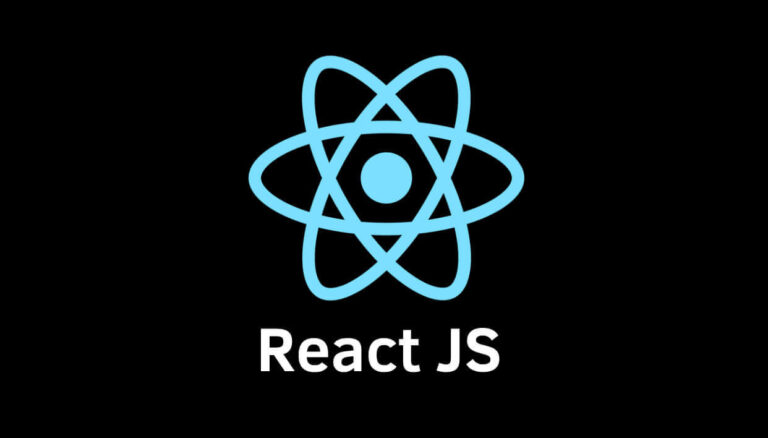Top 25 Must-know Banking Interview Questions & Answers

Banking offers an exciting career path, but you will have to scale the interview questions first with the right answers.
The industry is vast, from traditional retail banking corporations to investment banks and modern fintech startups causing disruptions here and there.
This list provides you with the top 25 banking interview questions for your practice. Learn and understand them to prepare yourself, as bank jobs can be quite competitive.
1. What Is Working Capital?
A business or organization’s working capital is the value of liquid assets available to meet its short- and medium-term obligations.
Working capital is the difference between an organization’s current assets and liabilities. For instance, a company with $50,000 in current assets and $7,000 in liabilities, has a $43,000 working capital.
2. What Is Inflation & How Do You Hedge Against It?
Inflation is the rate of increase in prices in a given locality or country and over a given period. Inflation typically measures the prices of basic products and services in a given country to help gauge its economic performance. A little inflation can be good for an economy, but high inflation is usually bad.
The best way to hedge against inflation is to invest your money because it is money that gets devalued by inflation, while asset prices rise. So, buying assets from gold to real estate, commodities, bonds, and so on should solve the problem.
3. How Do Banks Earn A Profit?
In addition to charging interest on loans, banks additionally make money in many different ways. An investment bank makes money by offering investment services to high-net-worth individuals and corporations.
Commercial banks make money by selling various commercial services, including charging fees on them, such as savings and checking accounts, credit cards, safe deposit boxes, financial planning, mortgages, and so on.
4. List The Types of Bank Accounts
Depending on the target audience, a banking institution can offer one or more of the following account types:
- Savings Account
- Checking Account
- Certificate of Deposit Account
- Money Market Account
5. List And Explain The Different Types of Banks
- Retail Banks – Offer consumer and personal banking services, such as savings and checking accounts.
- Corporate Banks – Can be independent or a banking department. These institutions focus on providing services for corporations and governments.
- Investment Banks – These institutions focus on making money through investing in other corporations, including mergers and acquisitions. They might either do so with their own money or work on behalf of wealthy clients.
- Community Development Bank – CD banks are private enterprises that focus on social responsibility. They often receive government support.
- Credit Union – These are financial co-operatives that belong to their members. They accept deposits and give loans, but pass their earnings back to the members.
- Online Banks – Fintech continues to disrupt the banking industry, so this group of financial institutions, though they are not traditional banks, deserve a mention.
6. What Is APR?
APR is an acronym for Annual Percentage Rate. It is the yearly interest for borrowing or lending money and is calculated as a percentage of the money borrowed or lent.
APR reflects the total cost of borrowing because it includes both the yield and all additional borrowing costs.
7. What Is Prime Rate?
A prime rate or prime lending rate refers to the interest rate used by financial institutions to lend money to their most creditworthy customers, usually large corporations.
The rate is usually lower than the standard rate charged to other borrowers because these most-creditworthy customers have the least chance of defaulting on the loan.
8. What Is Amortization?
Amortization is the process of spreading payments over multiple periods. These are called installments and can either be used for paying off loans or asset costs. Each installment usually consists of both the principal and the interest.
An example of asset amortization would be the writing off of a solar power installation over 30 years. Assuming it cost $300,000 to develop and install, that would mean $10,000 annual installments.
9. What Is ROI and How Do You Calculate It?
ROI stands for Return On Investment and it is a ratio used to calculate an investor’s potential benefit concerning his invested capital. ROI is stated as a percentage, such as 20% ROI, which means that an investor should expect 20% of his invested capital as profit. Higher ROI means more profits.
Calculating ROI is straightforward, you divide the net income from the investment by the initial capital cost. The net income, of course, can be deduced by subtracting the initial capital cost from the venture’s final value.
ROI = (Net Profit / Cost of Investment) x 100
10. Explain Credit Netting
This is the process of consolidating numerous financial transactions into a single transaction to carry out a single credit check on them as an entity.
Large financial institutions use credit netting to reduce the number of credit checks that they carry out and thereby save costs.
11. What Is An ILOC (Irrevocable Letter of Credit)?
A letter of credit, also known as a letter of undertaking, is a method of payment in international trade. It provides an exporter of goods a written guarantee from a federally approved financial institution, that the international buyer is trustworthy. In other words, the bank assumes the risk on behalf of the buyer.
There are two types of letters of credit; 1) revocable and 2) irrevocable. A revocable LC is subject to change at any time and the bank’s discretion, while an irrevocable letter of credit cannot be amended and therefore, guarantees the payment according to the stated terms.
12. Explain the Debt-to-Income Ratio
Debt-to-income ratio or DTI is a valuation of how much a person or organization owes, to how much they earn. It is a measure of a budget’s percentage that goes towards debt payments, including rent, credit cards, mortgages, and so on.
Lenders want a borrower with a DTI as low as possible. Below 30% DTI is great, 50% and above is bad.
DTI = (debt obligations / income) x 100
13. How Does A Debit Card Differ From A Credit Card?
Both cards can be used for electronic payments. But a debit card is linked to a checking account, from which payments are immediately deducted, while a credit card is linked to a credit line, which can be paid back later.
14. Mention Some Methods For Overdraft Protection
Overdrawing an account means going into a negative balance, which often comes with fees and interest, depending on the bank. With overdraft protection, however, you can instruct your bank to cover the overdraft automatically from a different source. Overdraft protection helps to prevent ATM and debit card transactions from getting declined due to non-sufficient funds.
Major methods of overdraft protection include:
- Linking your checking account to another checking or savings account in the same bank.
- Linking a credit card to your checking account to cover overdrafts.
- Request an overdraft protection credit line from your bank.
15. List The Different Ways A Customer Can Operate A Bank Account
Listing from the most traditional to the latest methods, they are:
- Over the Counter – this is a face-to-face service available at the bank’s branches.
- ATM – use of automated teller machines.
- Telephone Banking – you can call, identify yourself, and give instructions over the phone.
- Internet Banking – conducting most banking needs online with secure authentication.
- Mobile Banking – using mobile-phone-specific features for banking, such as USSD and banking apps.
16. What Is the Cost of Equity & How Do You Calculate It?
The cost of equity is a measurement of a potential investment’s return concerning the risk involved. In simple terms, it answers the question of whether an investment is worth the risk.
You can calculate the cost of equity using any of 2 methods, the Capital Asset Pricing Model (CAPM) and the Dividend capitalization model.
17. Define CAPM
The Capital Asset Pricing Model or CAPM in short is a method of calculating the cost of equity or the required rate of return from an investment, to make it worth the risk. It combines variables such as a Risk-free rate, a Beta of the security, and expected market return to give you the expected return on that particular investment.
ERi = Rf + βi (ERm – Rf)
where:
ERi = Expected return on investment or Cost of Equity
Rf = the investment’s risk-free rate
βi = the beta or market sensitivity
(ERm – Rf) = the risk premium
18. What Is QE (Quantitative Easing)?
Quantitative easing is a monetary policy strategy often applied by the central bank of a jurisdiction to lower interest rates and boost economic activity by directly injecting liquidity into the financial system.
Methods of quantitative easing include buying government securities such as bonds.
19. What Is a Home Equity Loan?
A home equity loan, also known as a second mortgage, is a financial product that allows consumers to borrow money against the equity in their home.
The loan’s value depends on the difference between the property’s current market price and the amount you owe on all loans secured by your house.
20. Explain The Difference Between Bond Yield and Bond Spread
A bond’s yield refers to the amount of interest that an investor will get from that bond at maturity. It is stated as a percentage of the bond’s purchase price. Bond spread, on the other hand, refers to the difference between treasury and corporate bond yields.
The thinking here is that treasury bonds have a very minimal risk of default since they are backed by the government. Corporate bonds, on the other hand, have higher default risks and should have higher bond yields, which can be easily indicated from their bond spreads during evaluation.
21. Who Is The Central Bank of Central Banks?
The Bank of International Settlements (BIS) in Basel, Switzerland.
22. What Is Loan Grading?
Loan grading is a method of classifying loan applications to identify the borrower’s risk of default. The quality score is determined by considering variables such as the borrower’s credit history, the quality of the collateral used for the loan application, and the borrower’s overall likelihood of repaying the loan.
23. What Is Accretion?
Accretion is asset growth or a positive change in value that results from a transaction. It can happen in many ways, such as through mergers, acquisitions, and the purchase of discounted bonds.
24. Explain The Term LIBOR
LIBOR stands for London Interbank Offered Rate and refers to the average interest rates at which major global banks in the London money market are prepared to lend money to each other. The rates are published daily by Thomson Reuters.
25. What is APY?
APY stands for Annual Percentage Yield and it is the real rate of return on investment when you include compounded earnings. Unlike using simple interest for calculations, APY lets you calculate how much extra you can make from an investment by re-investing its yield over a given period.
APY = (1 + r / n)n – 1
where:
r = period rate
n = number of compounding periods
Conclusion
This wraps up our list of the top must-know banking interview questions and their answers. And as you must realize, these are recommendations, so feel free to dig deeper into each topic and learn more.
Also, keep in mind that banking is a customer-focused industry, and looks matter. So, you may additionally want to work on your first impression, dress code, and communication skills.





